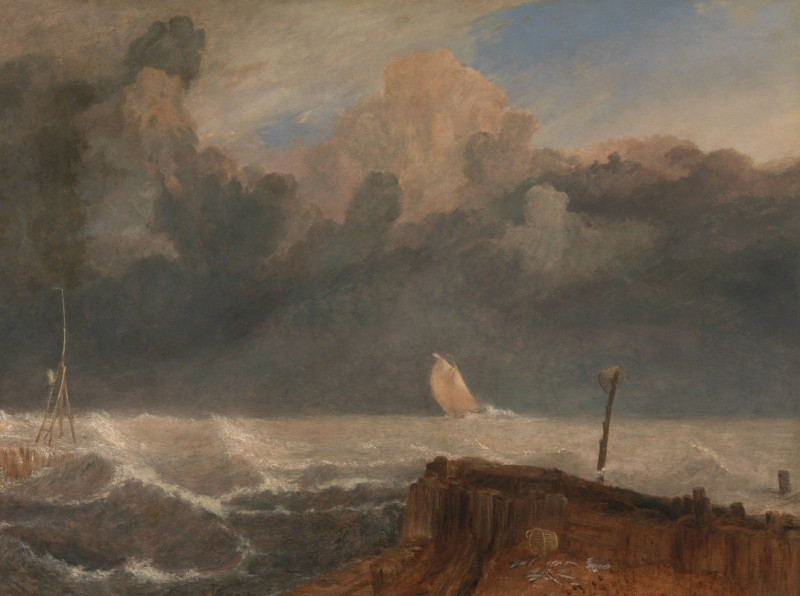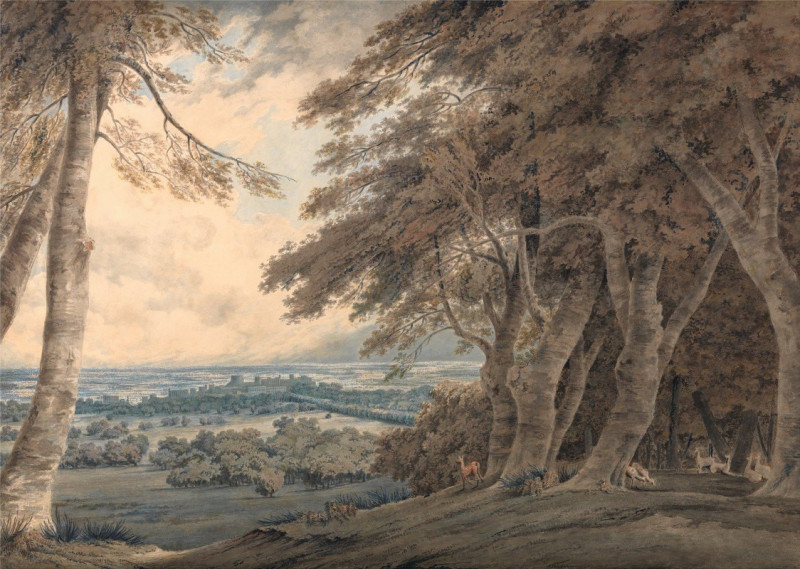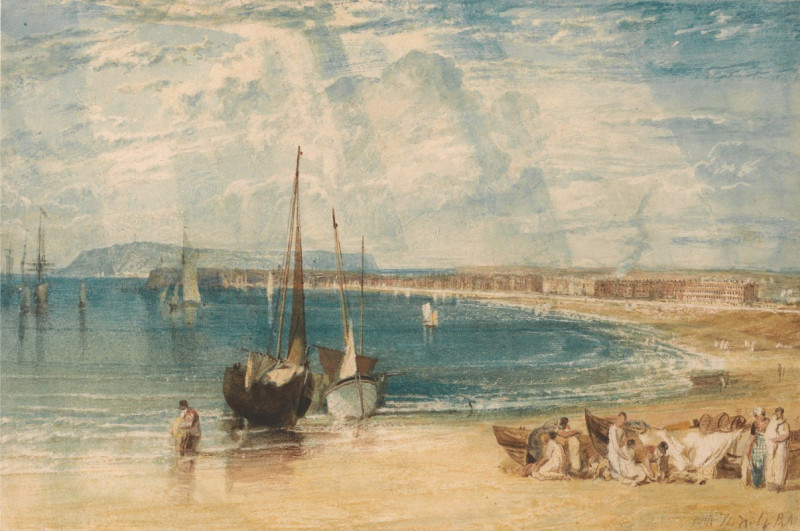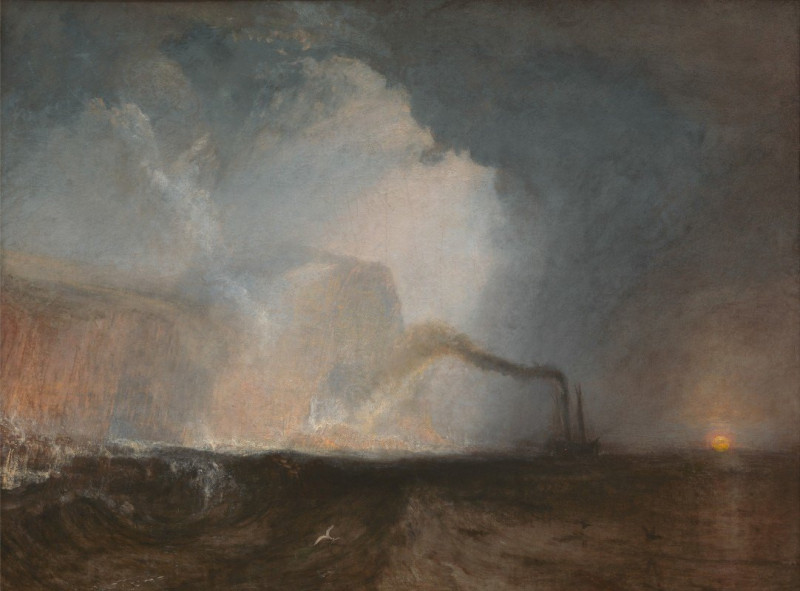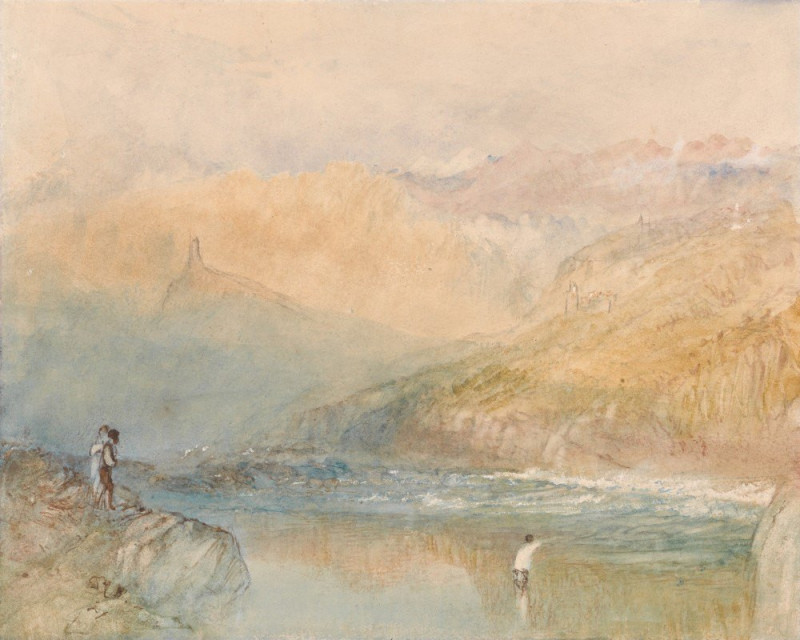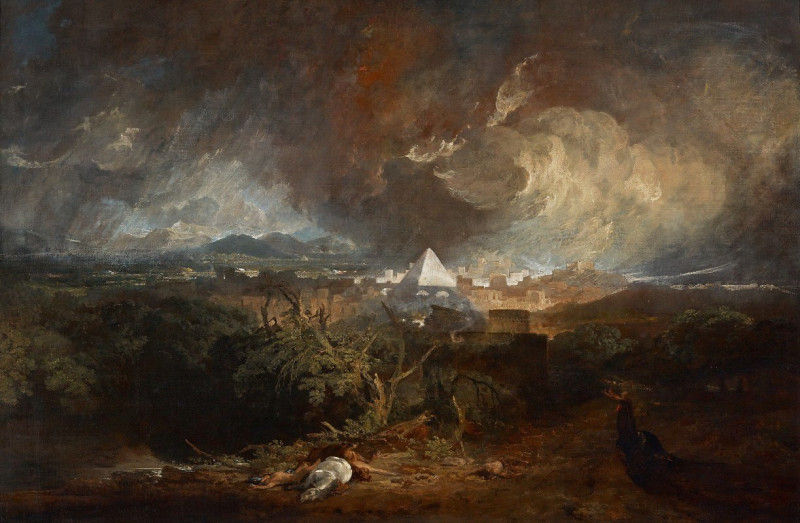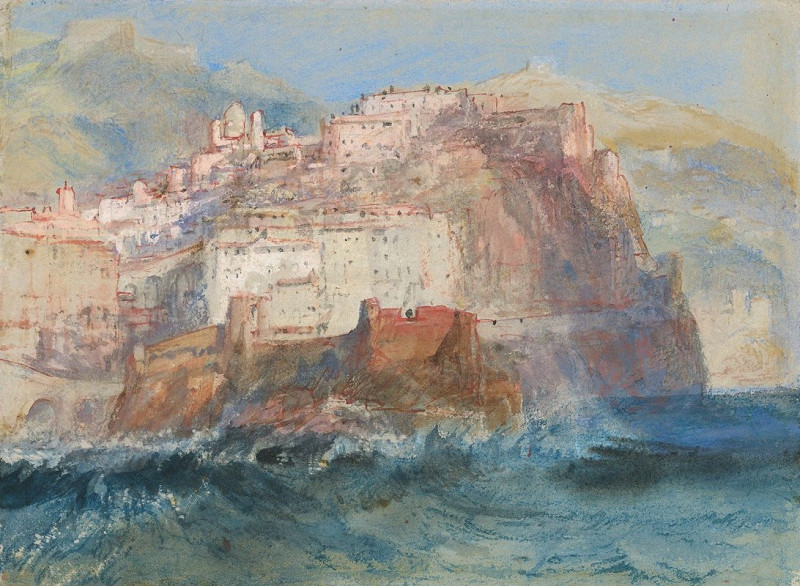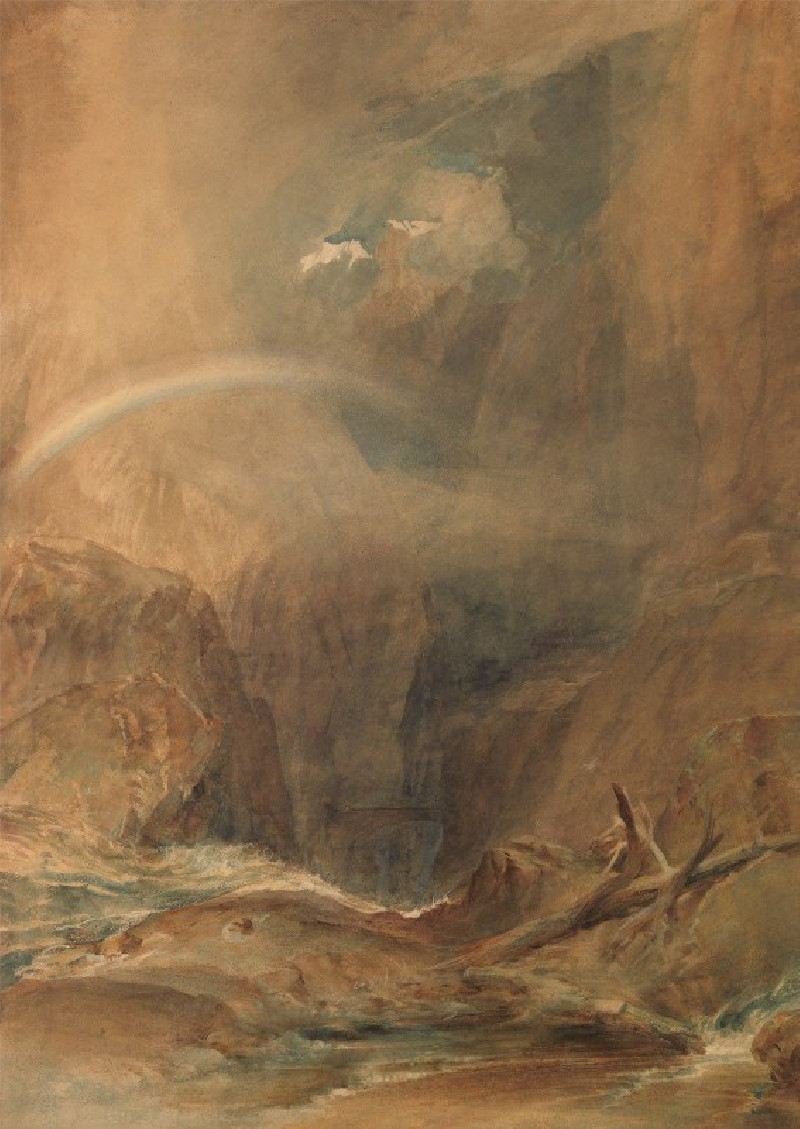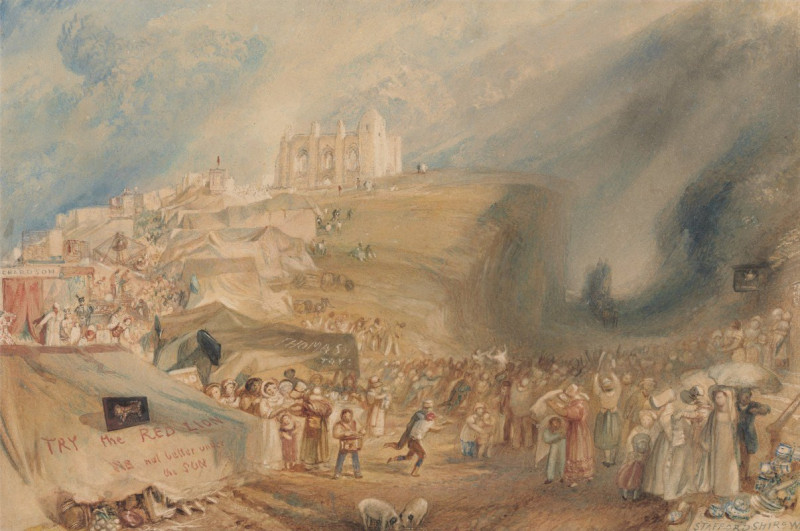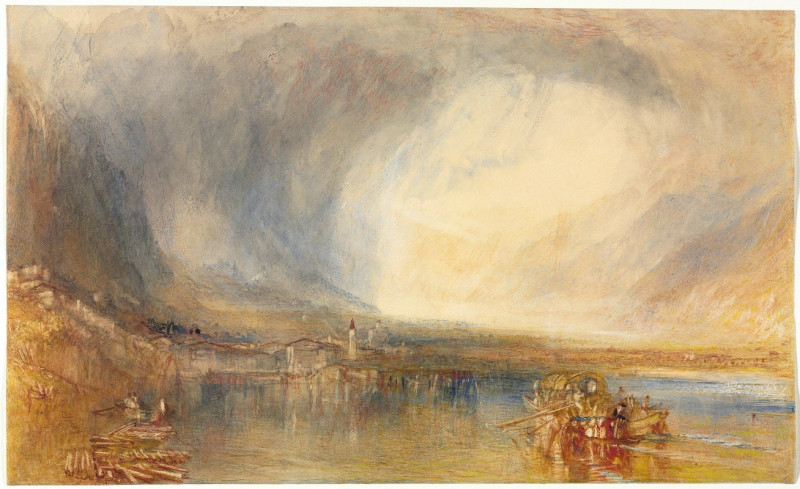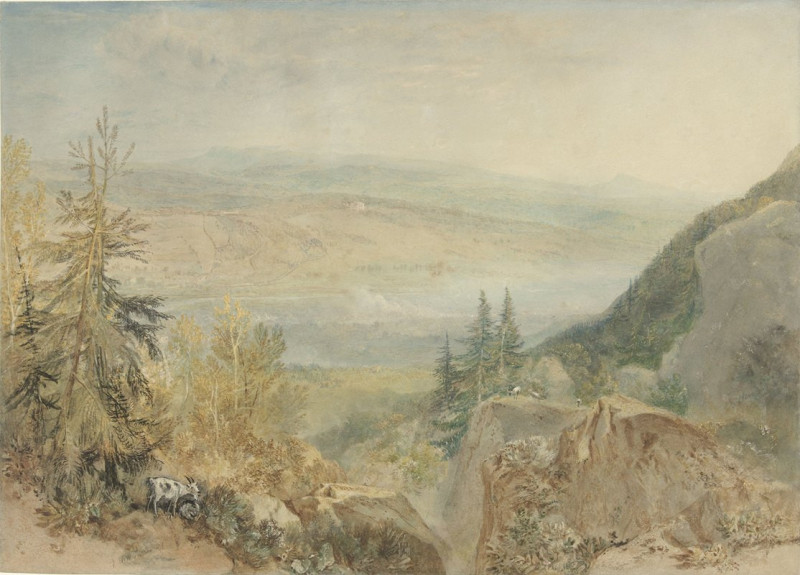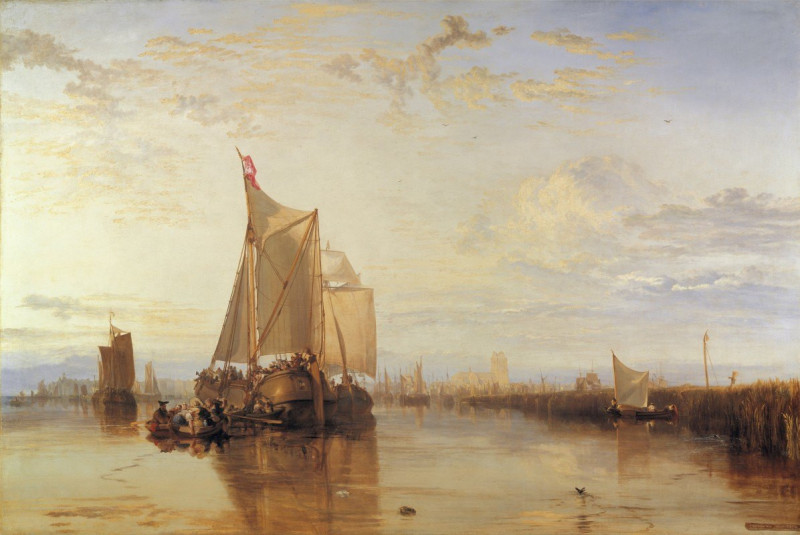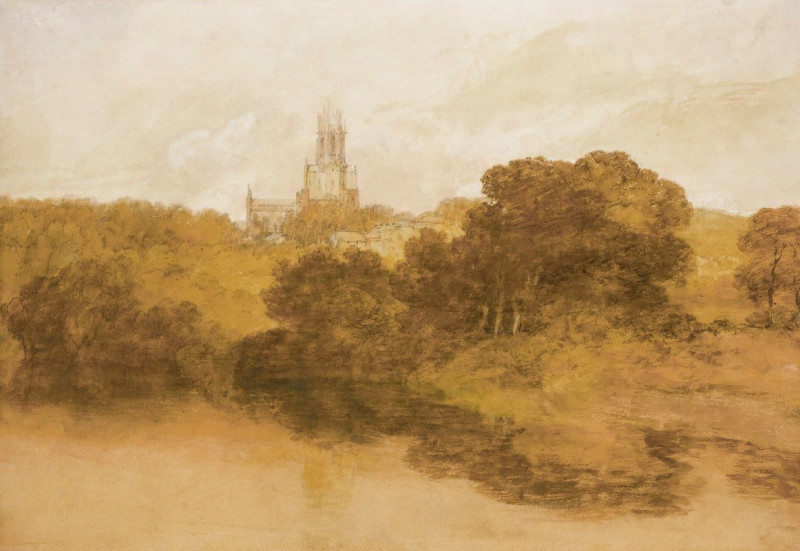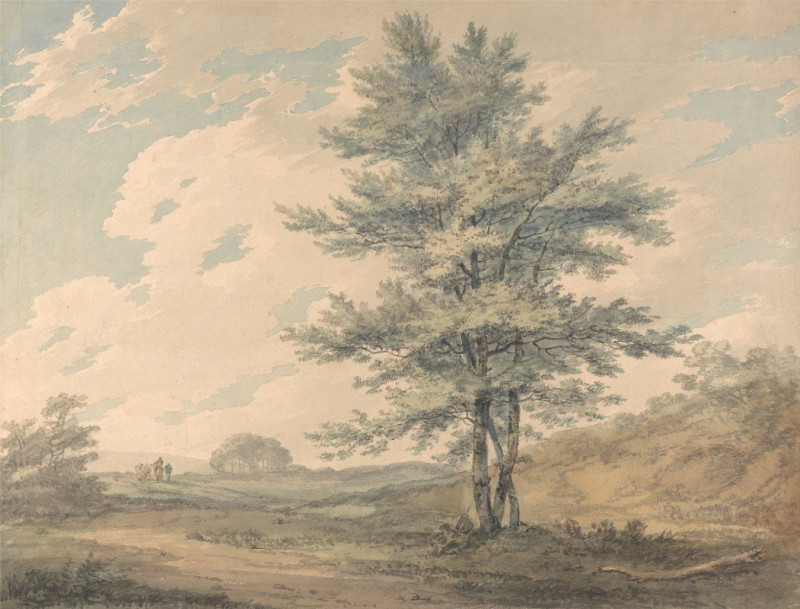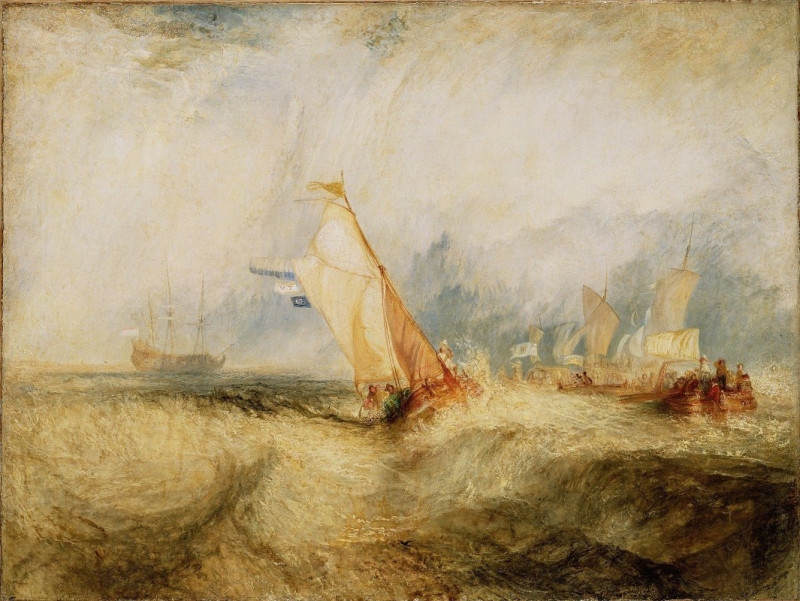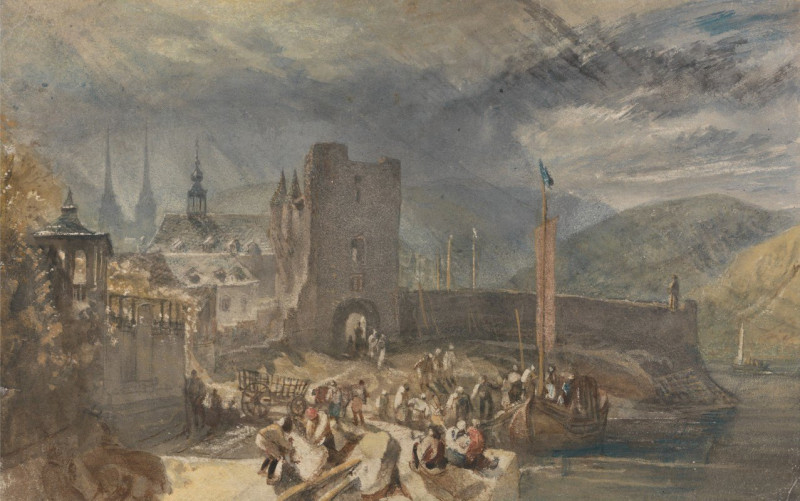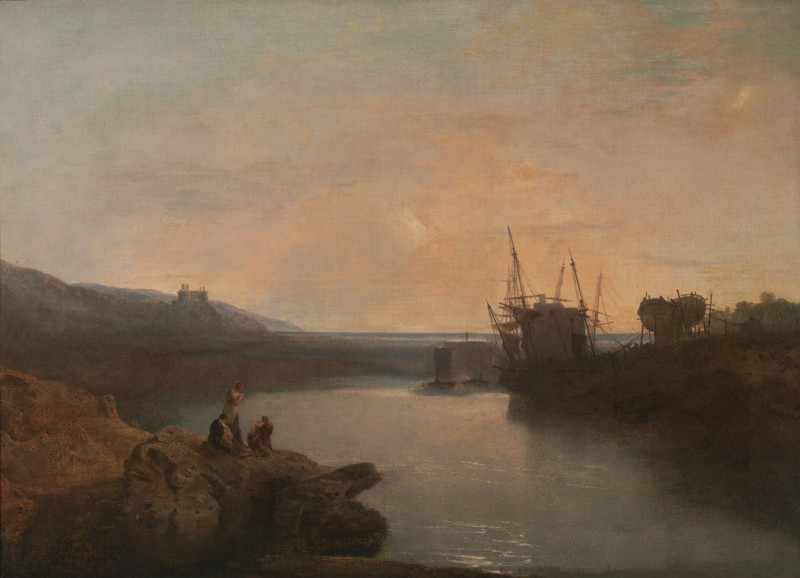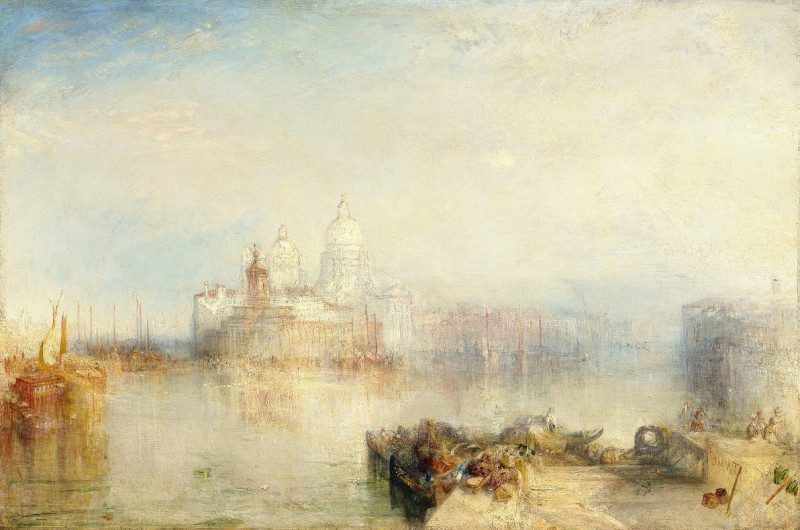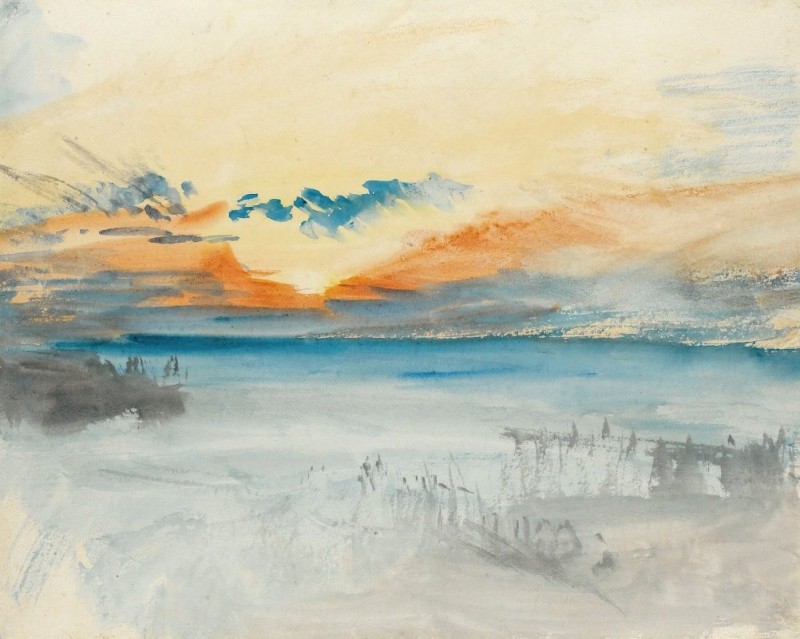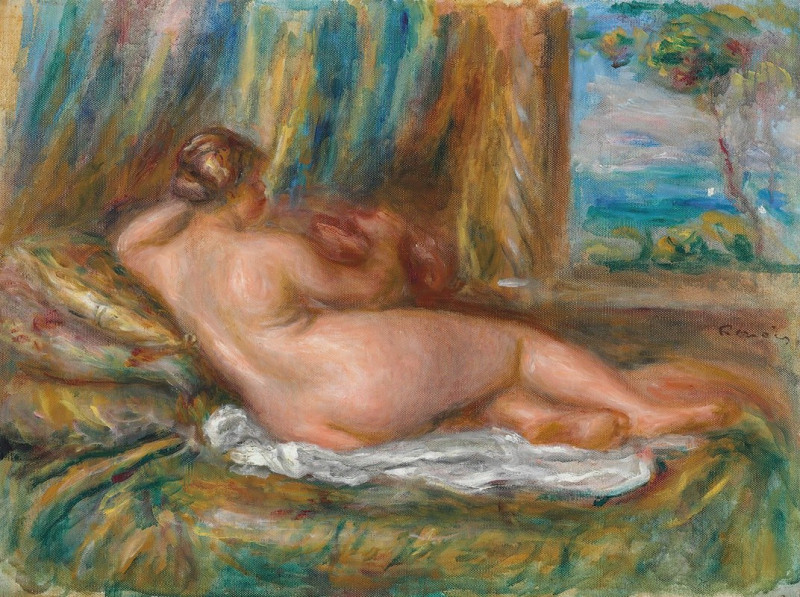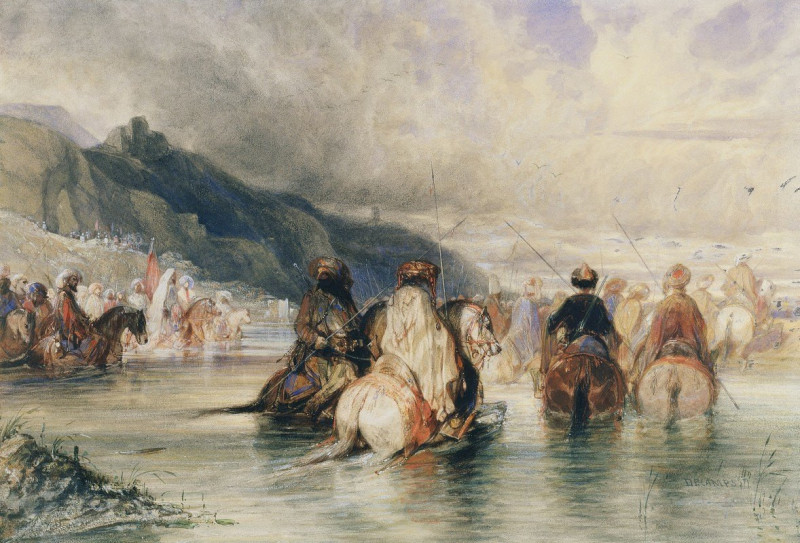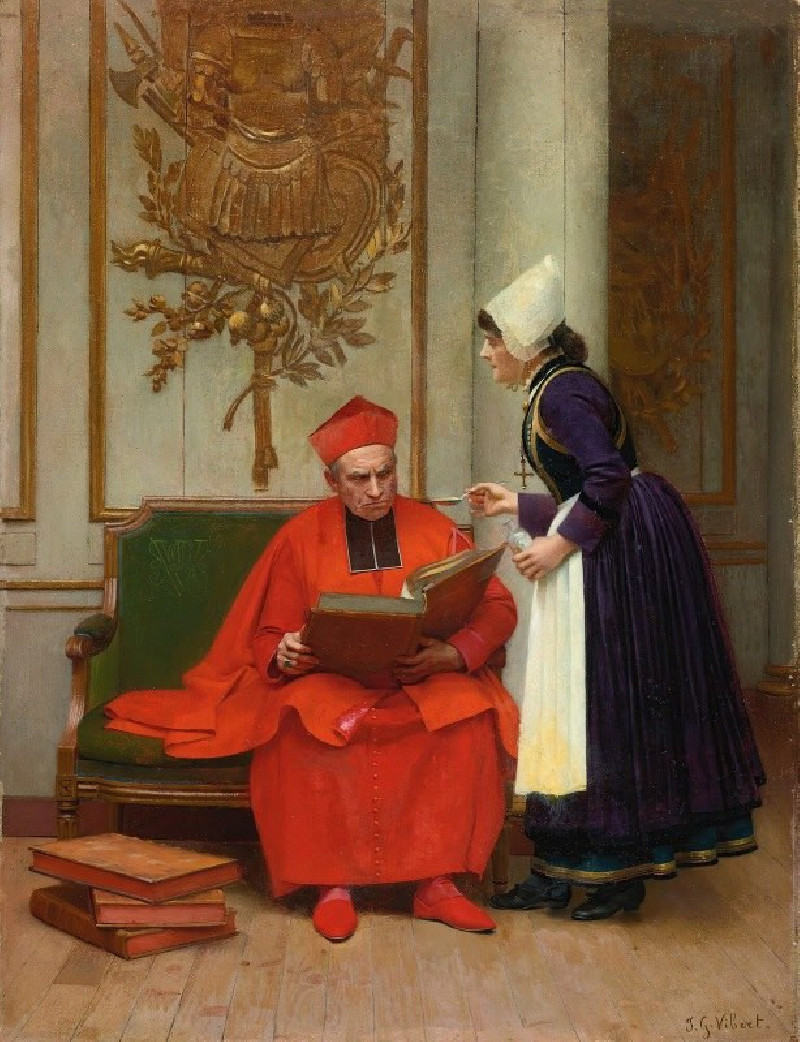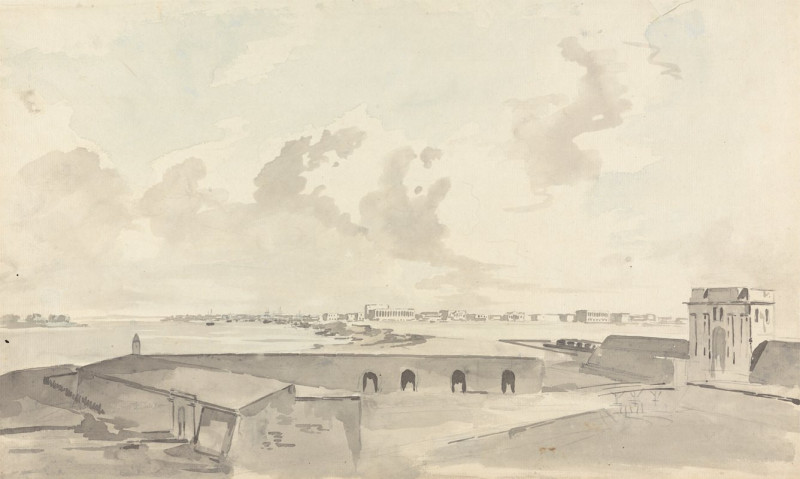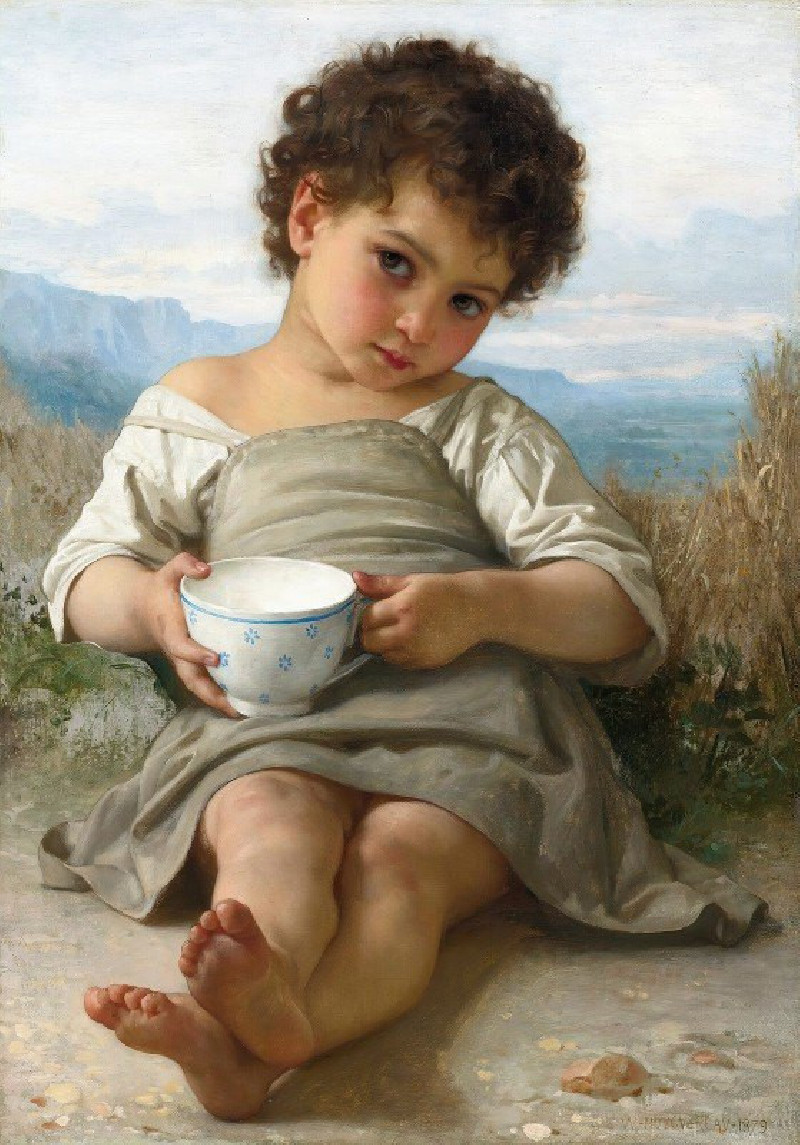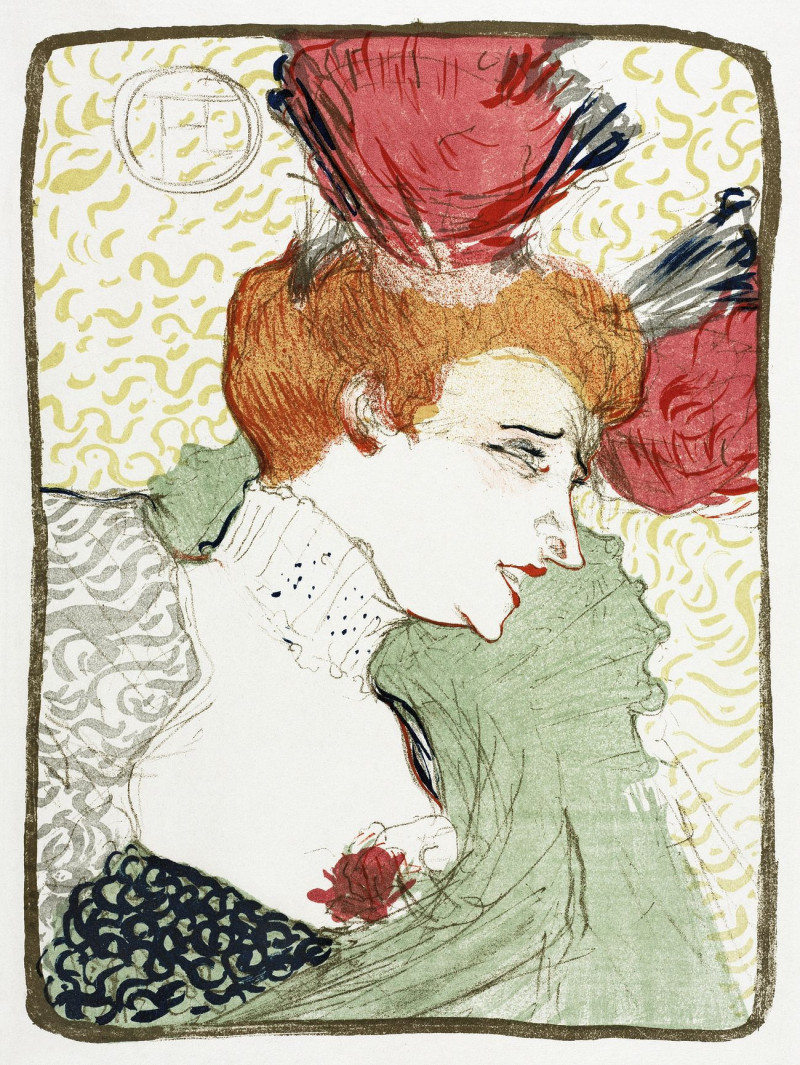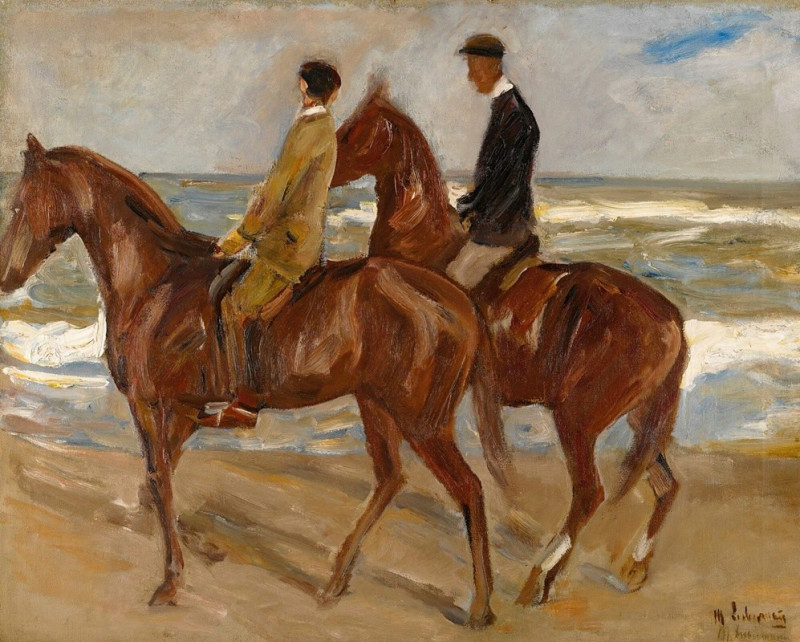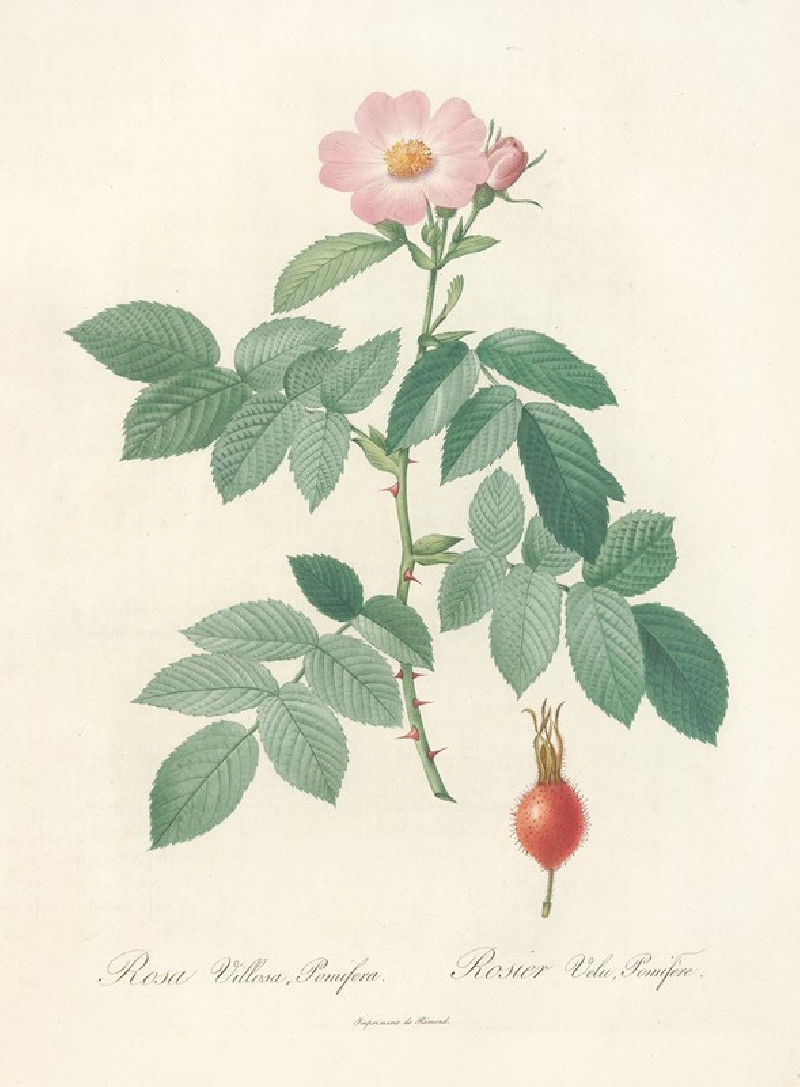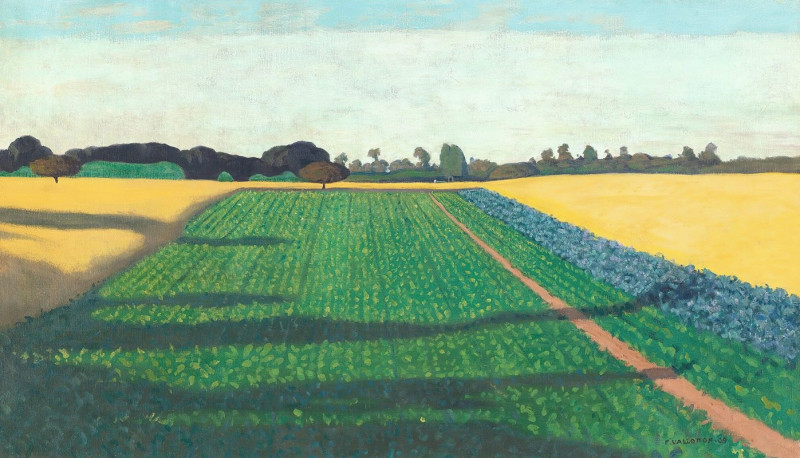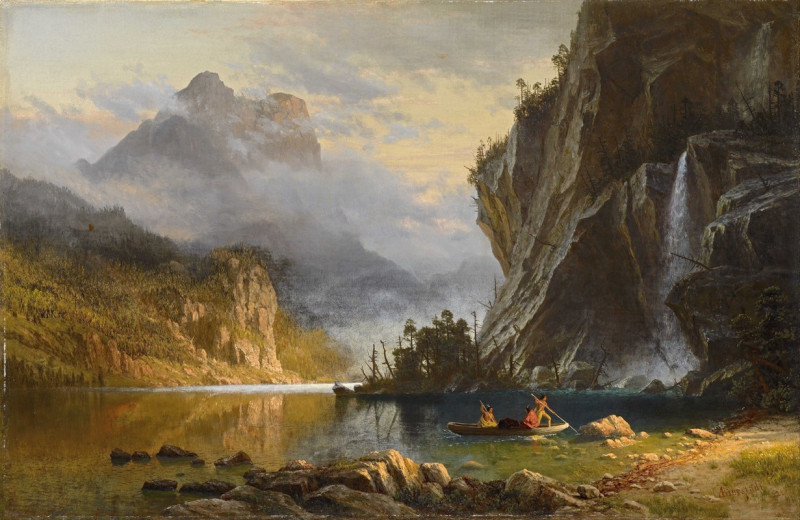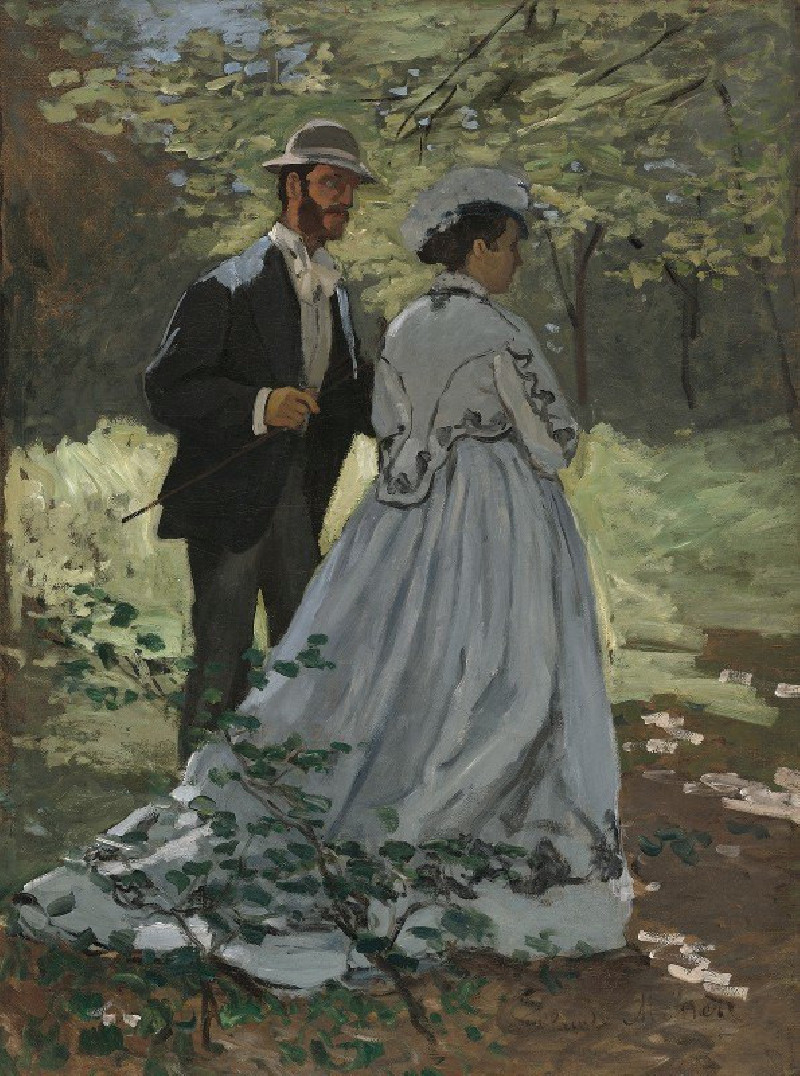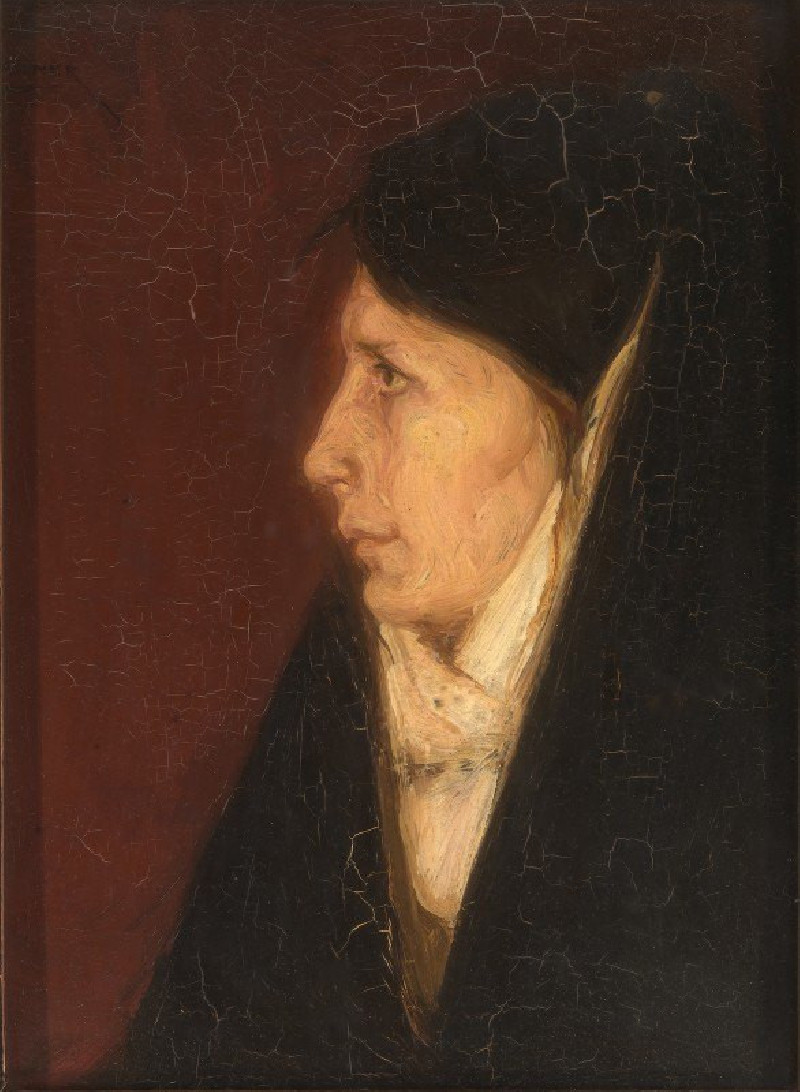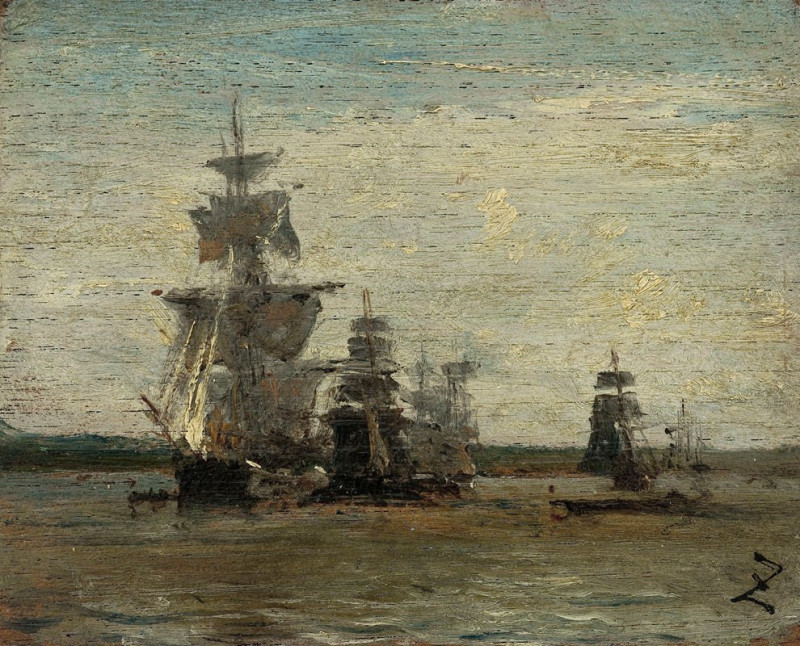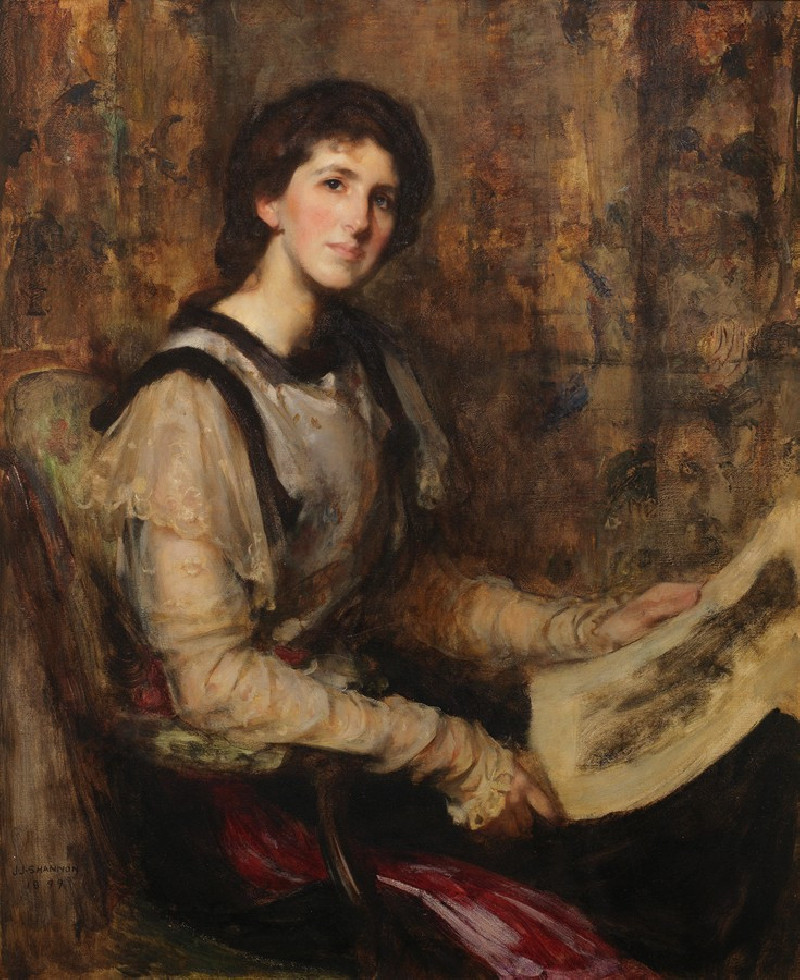Near Grindelwald (ca. 1796)
Technique: Giclée quality print
Recommended by our customers
More about this artwork
"Near Grindelwald," painted by Joseph Mallord William Turner around 1796, captures a serene and picturesque view of the Swiss Alps, focusing on the majestic mountainous landscape near Grindelwald. In this painting, Turner skillfully uses watercolor to create a harmonious interplay between light and shadow, presenting a delicate yet dynamic natural scene.The composition is carefully arranged with a foreground that features sweeping branches of a tree, curving gracefully across the top left corner. These branches act as a natural frame, leading the viewer's eye towards the heart of the scene—a striking, snow-covered mountain peak. Below the peak, layers of lush, dark forests add depth and contrast, enhancing the sense of immense scale and the raw beauty of the Alpine landscape.A gently flowing river mirrors the sky, reflecting light and adding a tranquil quality to the scene. This element not only balances the composition but also infuses it with a sense of peace and stillness.
Delivery
Returns
Joseph Mallord William Turner RA, known in his time as William Turner, was an English Romantic painter, printmaker and watercolourist. He is known for his expressive colourisations, imaginative landscapes and turbulent, often violent marine paintings. He left behind more than 550 oil paintings, 2,000 watercolours, and 30,000 works on paper. He was championed by the leading English art critic John Ruskin from 1840, and is today regarded as having elevated landscape painting to an eminence rivalling history painting.


